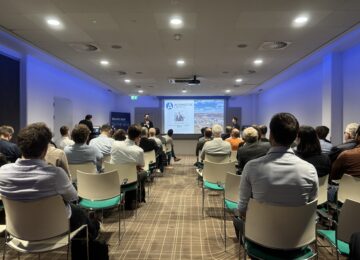Low-voltage grids action agenda: opportunities for home and neighborhood batteries, bi-directional charging and mobile storage
Outgoing Minister Jetten today published the Low Voltage Networks Action Agenda. This Action Agenda addresses problems of grid congestion for households, small businesses and civil society organizations at the low voltage level and contains advice - including on energy storage - to solve these problems in the long term.
Grid congestion on low-voltage grids
The energy transition is causing an increase in demand for electricity from businesses and households, which has major consequences for the electricity grid. Where previously we saw that this mainly caused grid congestion problems for large consumers on the main voltage grid, we now increasingly see that this also leads to problems for the transmission of electricity towards small consumers (households, small businesses and social organizations) on the low-voltage grid.
The problem analysis by grid operators and other stakeholders shows that if no action is taken, one and a half million small-scale consumers could be affected by grid congestion problems by 2030. Problems that people may face in that case range from blinking lights and equipment not working properly to risk of breakdowns or shutdowns of customers and solar inverters. Without additional measures, the waiting time for new or heavier retail connections is expected to increase significantly through 2030. With timely intervention, these problems can be prevented or reduced as much as possible.
To deal effectively with the current and expected problems on the low-voltage grids, the Action Agenda contains measures that focus on the following three areas: (1) accelerating the reinforcement and expansion of low-voltage grids, (2) improving the understanding of the (future) load on low-voltage grids, and (3) local coordination of electricity supply and demand to prevent peak loads. Around the latter area, energy storage is seen as a potential technology that can alleviate conngestion problems on the low-voltage grid. To this end, several recommendations are made to accelerate the deployment of energy storage.
Opinions around energy storage
Advice around energy storage in the Action Agenda focuses on the deployment of bi-directional lands, home and neighborhood batteries, and mobile energy storage.
Bi-directional charging
One of the measures in the Action Agenda that is being worked on is enabling bi-directional charging, which allows the battery of an electric vehicle to charge with power from the grid and, on the other hand, to deliver power from the battery back to the grid. Bi-directional charging in the public domain currently faces ten major bottlenecks[1], including the double energy charge for resupply. These and other issues should be resolved through a developed plan for bi-directional charging to make the "battery on wheels" contribute to avoiding grid congestion.
Home and neighborhood batteries
The deployment of home and neighborhood batteries is also being looked at to solve congestion problems on the Low-voltage grid. For example, the action agenda writes that if congestion in a low-voltage grid cannot be solved properly by grid reinforcement or by flexible use of other devices (charging stations, heat pumps, solar PV) it is then possible to increase the flexibility offer by connecting home or neighborhood batteries. A developed plan in Q1 2024 should lead to an approach for home and neighborhood batteries in preventing grid congestion.
Mobile energy storage
Finally, mobile flexibility also mentions mobile storage as a possible solution to grid congestion on the low-voltage grid. For example, the grid operator can organize sustainable forms of flexible generation or consumption, such as (mobile) batteries, to avoid overloading the low-voltage grids. A distinction is made here between two different applications of these installations
- The flexible installation can be used in emergency situations where unexpected overloading occurs, potentially leading to failures. In this case, an installation can be put down, temporarily, to avoid grid failure. This provides space to explore other measures to mitigate the overload.
- A flexible installation can be used for a longer period of time to bridge the period until the required amplification is fully realized.
Depending on the method of connection, it is expected that this could make ~20% additional capacity available at the MS/LS transformers. To further concretize the added value of mobile flexibility, research is being conducted on potential of deploying (mobile) flexibility.
Read the entire Low Voltage Networks Action Plan. here back.
[1] https://www.rijksoverheid.nl/documenten/rapporten/2021/11/02/bijlage-eindrapport-v2g-waarde-en-weg-voorwaarts





